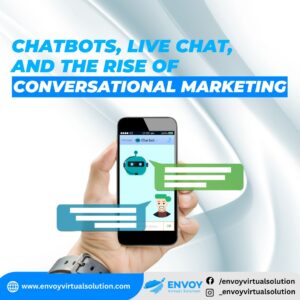
The marketing landscape has shifted dramatically. With rising privacy regulations, the phasing out of third-party cookies, and increasing consumer awareness, first-party data has emerged as the cornerstone of sustainable digital marketing. But what does this shift mean for brands, and how can you truly unlock the power of first-party data in a privacy-first world?
Let’s dive into how forward-thinking businesses are using this data to personalize experiences, strengthen trust, and drive measurable growth—all while respecting user privacy.
First-party data is the information your business collects directly from customers through your website, app, CRM, or other owned channels. This includes data such as:
Email addresses from newsletter signups
Purchase history from eCommerce transactions
On-site behavior, such as clicks and time spent
Customer feedback and survey responses
Unlike third-party data, which is bought or shared, first-party data is collected ethically and transparently. This makes it more accurate, compliant, and future-proof in a world where data privacy laws like GDPR and CCPA are tightening.
We’re entering a privacy-first era where consumers demand control over their data. Google’s plan to deprecate third-party cookies, Apple’s App Tracking Transparency (ATT), and increasing scrutiny from regulators have forced marketers to rethink their data strategies.
In this new landscape, the brands that thrive will be those that:
Earn trust through transparency
Provide value in exchange for data
Use data responsibly to enhance—not exploit—user experience
Privacy is no longer a compliance checkbox—it’s a competitive advantage.
Harnessing first-party data doesn’t just help you stay compliant—it helps you win. Here’s how:
Accuracy and reliability: You control how it’s collected and updated.
Personalization: Tailor experiences and recommendations based on real customer behavior.
Better ROI: Optimize campaigns using data that reflects true customer intent.
Cross-channel consistency: Deliver unified experiences across email, web, and social media.
Future-proofing: Remain resilient as third-party tracking fades away.
In short, first-party data empowers brands to build deeper, long-term relationships with customers.
Collecting first-party data isn’t about gathering as much information as possible—it’s about collecting the right data in transparent ways. Here are proven strategies:
Create valuable opt-ins: Offer exclusive resources, discounts, or early access in exchange for email signups.
Use surveys and quizzes: Engage users while learning about their preferences.
Implement loyalty programs: Reward repeat customers and track their engagement.
Host webinars or events: Encourage registrations to capture professional data.
Optimize website tracking: Use consent banners and clearly communicate how data is used.
Remember: users are more likely to share information when they understand what’s in it for them.
Collecting data is just step one. The real magic happens when you activate it:
Segment your audience: Group customers by interests, purchase history, or engagement level.
Personalize communication: Use dynamic content in emails and websites to reflect individual preferences.
Retarget ethically: Build lookalike audiences using anonymized data rather than invasive tracking.
Automate journeys: Trigger emails or offers based on user actions, like cart abandonment or repeat visits.
Brands like Nike, Spotify, and Starbucks have mastered this—leveraging first-party data to deliver deeply personalized experiences without breaching privacy.
In the privacy-first world, trust is currency. Be upfront about what data you collect and how it benefits the user. Clear privacy policies, transparent consent forms, and respectful communication help build credibility.
Tips to strengthen data trust:
Use plain language in your privacy policies.
Give users full control to update or delete their data.
Regularly audit your data collection practices.
Celebrate your privacy-first approach in your brand messaging.
Transparency doesn’t hurt conversions—it increases them by creating confident, loyal customers.
To make the most of your data, integrate technology that unifies, analyzes, and activates it efficiently:
Customer Data Platforms (CDPs) like Segment or Salesforce CDP
CRM systems like HubSpot or Zoho
Email automation tools like Klaviyo or Mailchimp
Consent management platforms such as OneTrust or Cookiebot
These tools ensure data accuracy, enable personalization at scale, and help maintain compliance across regions.
It’s not enough to collect and activate data—you must measure its performance. Track KPIs like:
Conversion rates from personalized campaigns
Email open and engagement rates
Customer retention and lifetime value (CLV)
Cost per acquisition (CPA) improvements
Use insights to refine your strategies. The more you learn from your own audience, the smarter your future campaigns become.
Adopting a first-party data strategy isn’t without hurdles. Common challenges include:
Integrating data from multiple sources
Ensuring compliance across jurisdictions
Gaining user trust after years of third-party tracking abuse
The solution? Start small, focus on transparency, and build systems that grow with your business. Partner with data experts if necessary—privacy-led marketing is worth the investment.
The shift to a privacy-first world isn’t the end of data-driven marketing—it’s the rebirth of it. Brands that respect privacy, value consent, and use first-party data to create genuine value will not only survive this transition but lead the future.
When done right, first-party data doesn’t limit creativity—it unlocks it.
Why is first-party data more valuable than third-party data?
Because it’s collected directly from your audience, it’s more accurate, ethical, and privacy-compliant.
What tools help manage first-party data?
CDPs like Segment, CRM tools like HubSpot, and consent platforms like OneTrust streamline data management.
How does privacy regulation affect marketers?
It limits how third-party data is used, making first-party data collection more important than ever.
Can small businesses leverage first-party data effectively?
Absolutely. Even simple tools like Google Analytics and Mailchimp can help collect and activate data responsibly.
How can I encourage users to share data?
Offer genuine value—exclusive content, personalized experiences, or loyalty rewards.
Phone: +1 844-945-2863
What’s App: 639254595080
Need help or have a question?
Contact us at: clientacquisition@envoyvirtualsolution.com